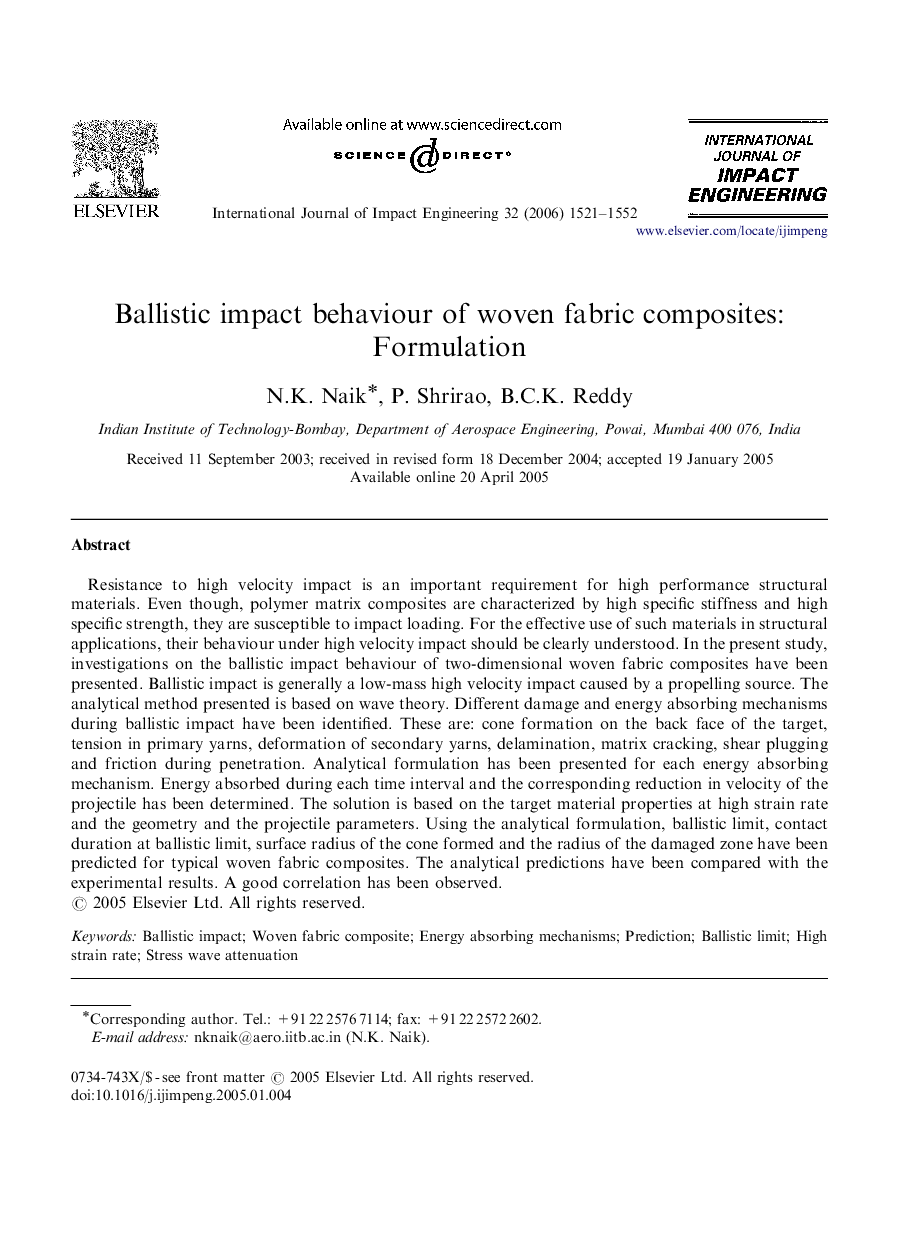| Article ID | Journal | Published Year | Pages | File Type |
|---|---|---|---|---|
| 778896 | International Journal of Impact Engineering | 2006 | 32 Pages |
Resistance to high velocity impact is an important requirement for high performance structural materials. Even though, polymer matrix composites are characterized by high specific stiffness and high specific strength, they are susceptible to impact loading. For the effective use of such materials in structural applications, their behaviour under high velocity impact should be clearly understood. In the present study, investigations on the ballistic impact behaviour of two-dimensional woven fabric composites have been presented. Ballistic impact is generally a low-mass high velocity impact caused by a propelling source. The analytical method presented is based on wave theory. Different damage and energy absorbing mechanisms during ballistic impact have been identified. These are: cone formation on the back face of the target, tension in primary yarns, deformation of secondary yarns, delamination, matrix cracking, shear plugging and friction during penetration. Analytical formulation has been presented for each energy absorbing mechanism. Energy absorbed during each time interval and the corresponding reduction in velocity of the projectile has been determined. The solution is based on the target material properties at high strain rate and the geometry and the projectile parameters. Using the analytical formulation, ballistic limit, contact duration at ballistic limit, surface radius of the cone formed and the radius of the damaged zone have been predicted for typical woven fabric composites. The analytical predictions have been compared with the experimental results. A good correlation has been observed.
